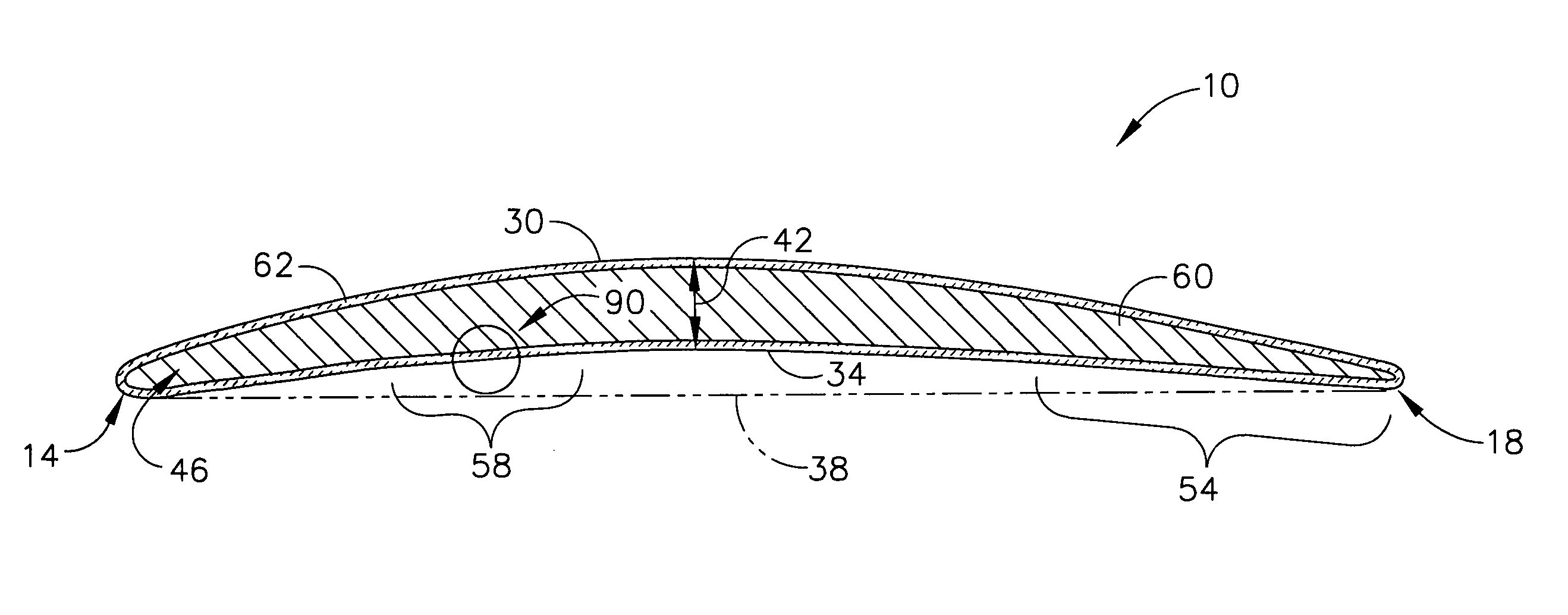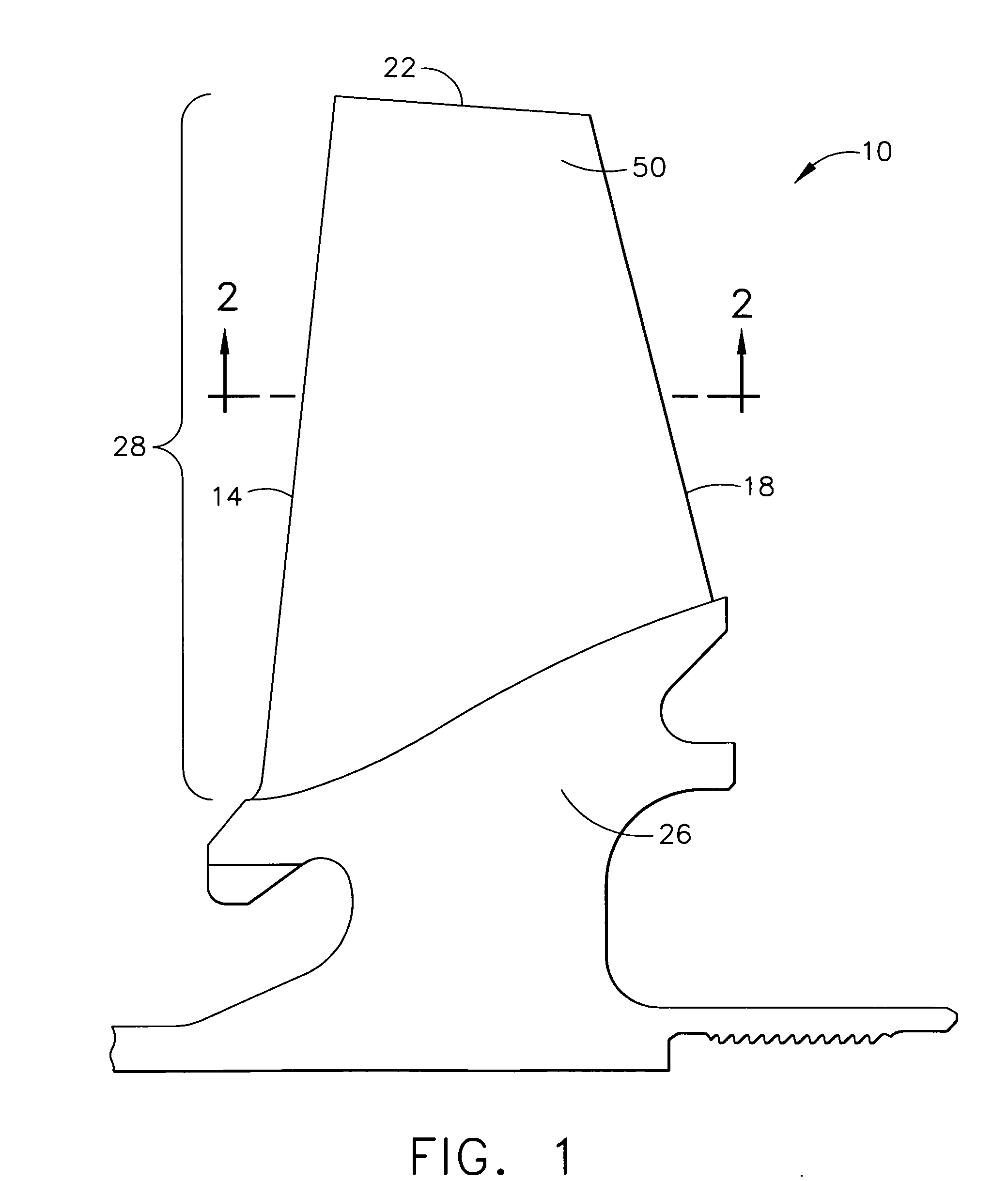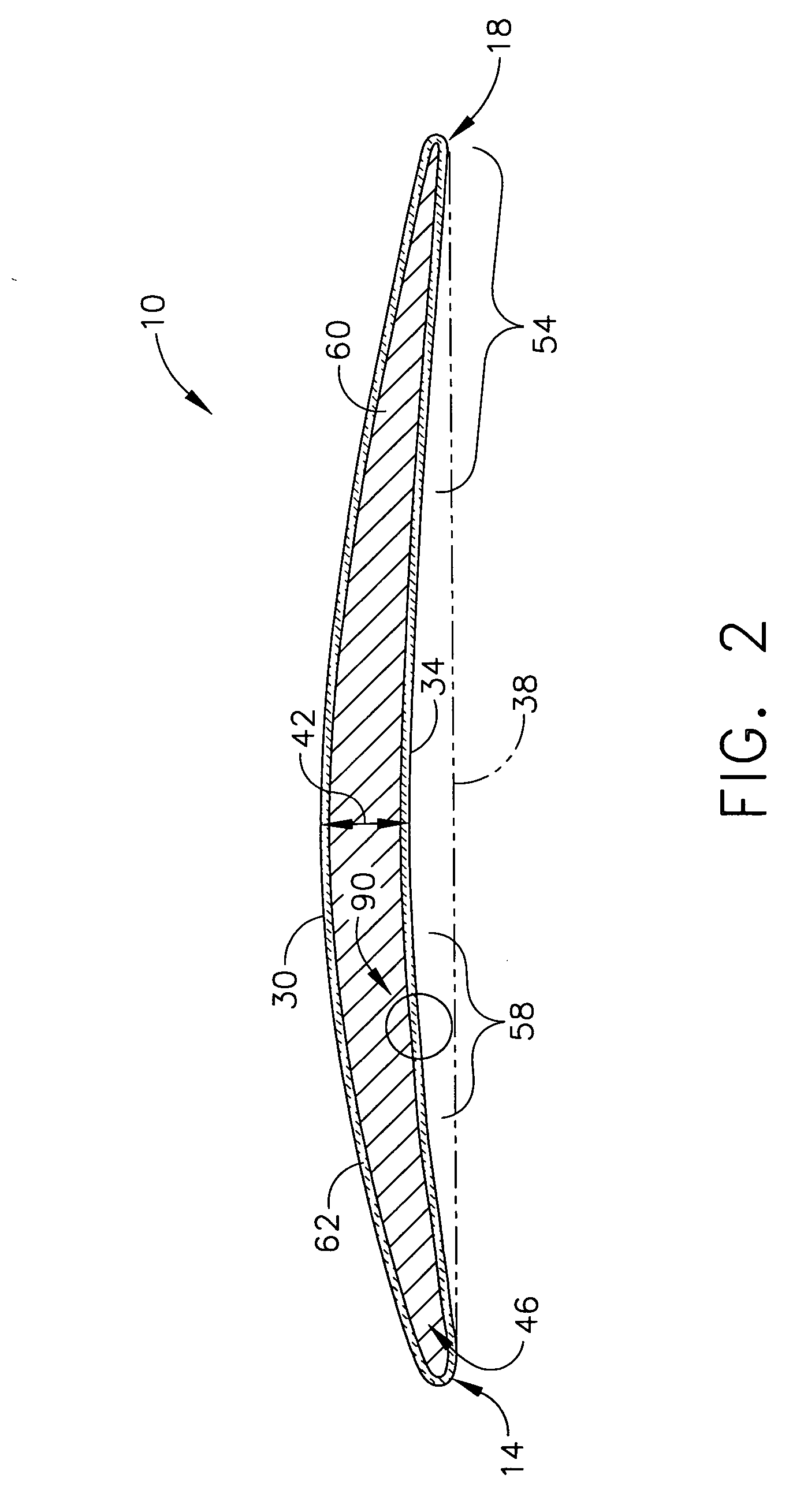Airfoil having improved impact and erosion resistance and method for preparing same
- Summary
- Abstract
- Description
- Claims
- Application Information
AI Technical Summary
Benefits of technology
Problems solved by technology
Method used
Image
Examples
Embodiment Construction
[0020] As used herein, the term “elongation” refers to the increase in gage length of the specimen measured after fracture of the specimen within the gage length, and expressed as the percentage of the original gage length or “elongation percentage” (Ep) according to the following equation:
Ep=[(Lx−Lo) / Lo]×100
[0021] wherein Lo is the original gage length and Lx is the final gage length. See Davis, ASM Materials Engineering Dictionary (1992), p. 114
[0022] As used herein, the term “fracture toughness” refers to the measurement of the resistance of the specimen being tested to extension of a crack. Fracture toughness of a specimen is measured herein by the Charpy impact test. See Davis, ASM Materials Engineering Dictionary (1992), p. 72.
[0023] As used herein, the term “hardness” refers to the measurement of the resistance of the material to surface indentation or abrasion. The hardness of a material is measured herein by units of indentation (in GPa) using Brinell or Rockwell hardne...
PUM
| Property | Measurement | Unit |
|---|---|---|
| Fraction | aaaaa | aaaaa |
| Pressure | aaaaa | aaaaa |
| Pressure | aaaaa | aaaaa |
Abstract
Description
Claims
Application Information
 Login to View More
Login to View More - R&D
- Intellectual Property
- Life Sciences
- Materials
- Tech Scout
- Unparalleled Data Quality
- Higher Quality Content
- 60% Fewer Hallucinations
Browse by: Latest US Patents, China's latest patents, Technical Efficacy Thesaurus, Application Domain, Technology Topic, Popular Technical Reports.
© 2025 PatSnap. All rights reserved.Legal|Privacy policy|Modern Slavery Act Transparency Statement|Sitemap|About US| Contact US: help@patsnap.com



